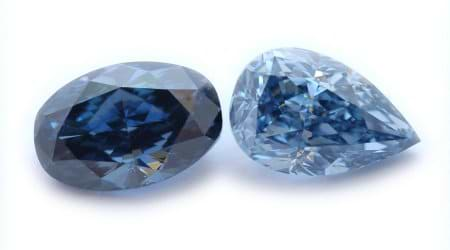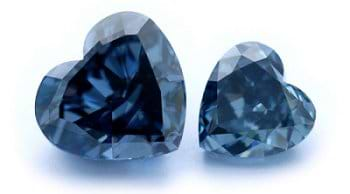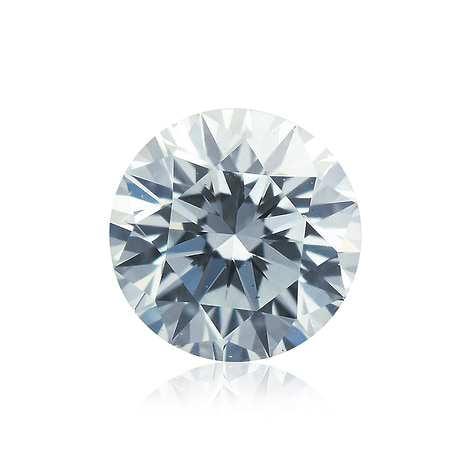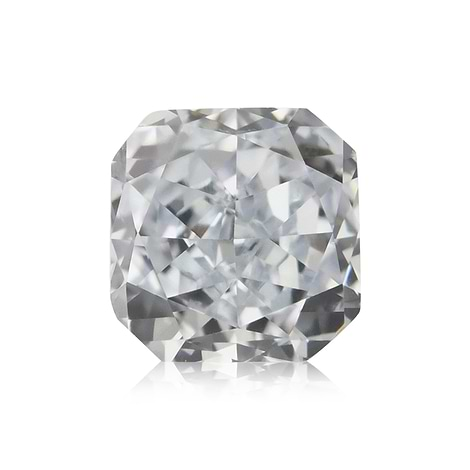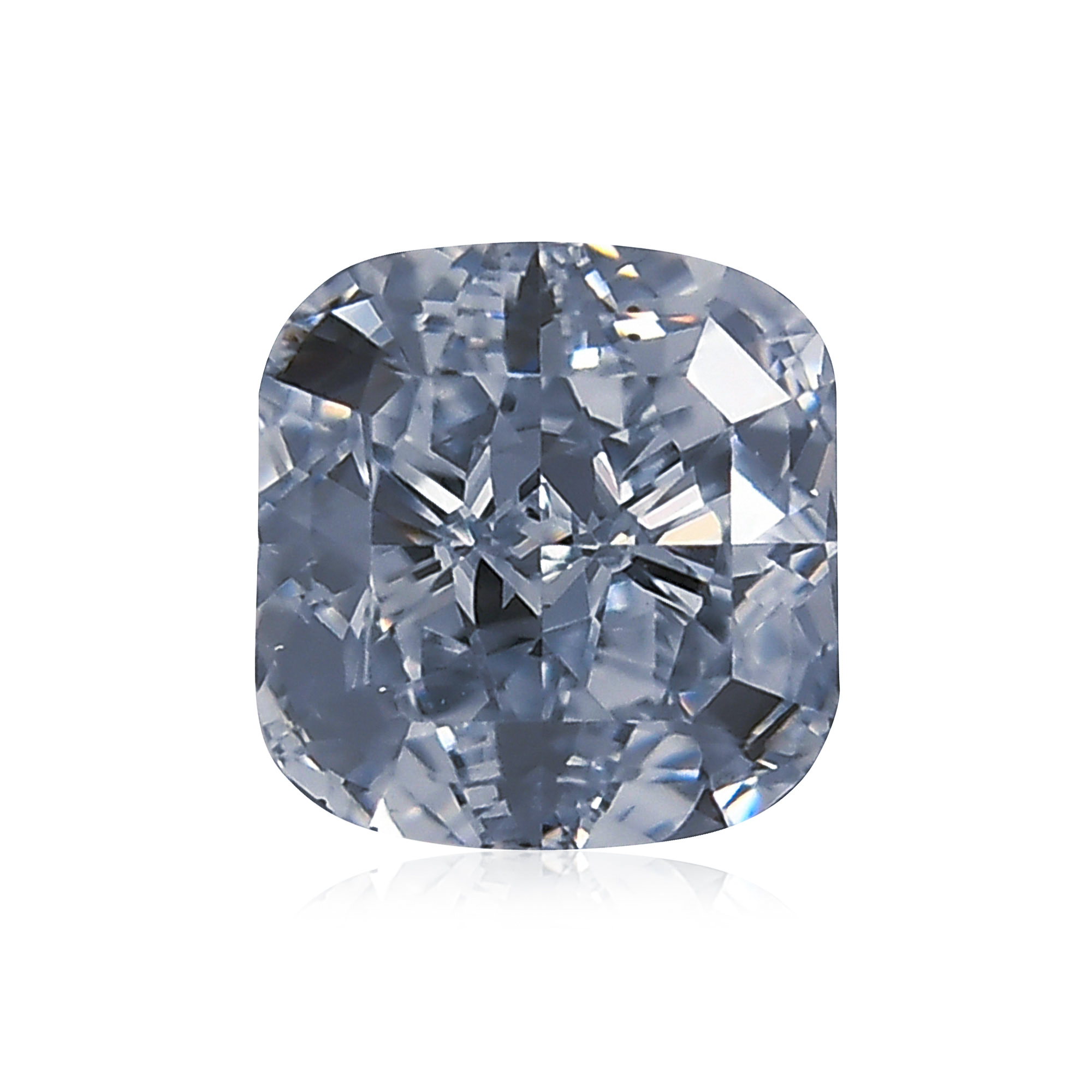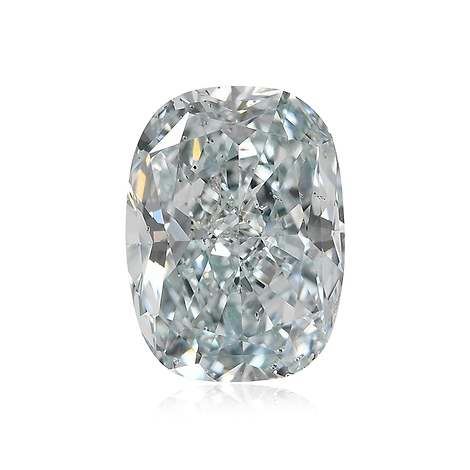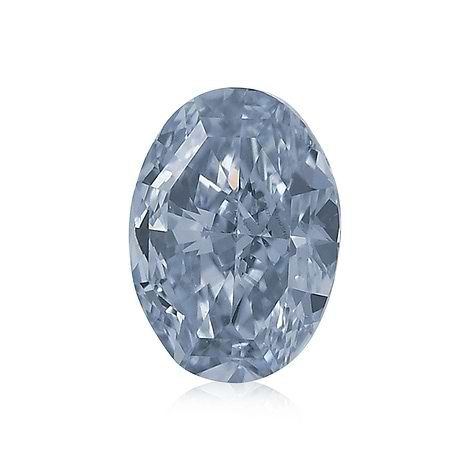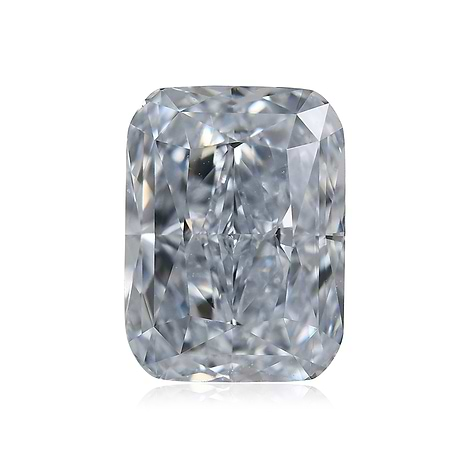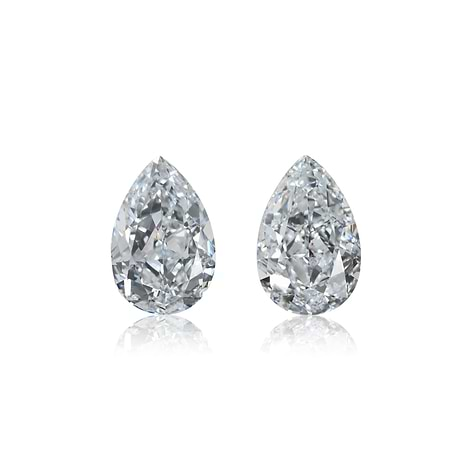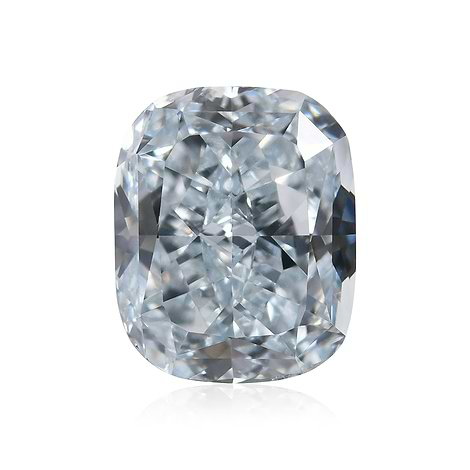The color most often connected to royalty, wisdom, and prestige. Fancy blue diamonds are quite valuable and often considered to be extreme rarities, even among other fancy colors. Blue colored diamonds are often sought after by some of the most rich and famous.
Most fancy diamonds, including natural blue colored stones were originally found in India. However, South Africa has recently been one of the most dominating producers of fancy blue colored diamonds. They have taken the lead in the production of blue diamonds, specifically from the Pretoria mine. The Argyle mine in Australia is also famous for some of the magnificent blue and violet colors, often containing a grayish secondary hue.
|
Pure Fancy Deep and Fancy Vivid Blue |
The Many Shapes and Shades of Blue Diamonds
One of the rarest forms of diamonds is the natural blue diamond. Most fancy color diamonds receive their unique colors from the presence of various elements. For instance, nitrogen within a diamond causes a yellow coloring whereas boron is responsible for a blue diamond’s incredible hue. In order to understand more about the high quality blue diamonds that are on the market, it is imperative to become acquainted with the possible shapes and shades that are typical for blue diamonds.
Color Intensity
Blue diamond's can appear as a Faint Blue, Very Light Blue, Light Blue, Fancy Light Blue, Fancy Blue, Fancy Deep Blue, and Fancy Vivid Blue. In the event of a secondary hue, a Fancy Dark intensity is also possible. As a result of the color saturation, blue diamonds vary from the pale blue, to brilliant blue, to intense blue shades of color.
Color Intensity Levels for Blue Diamonds:
The color intensity levels differ from diamond color to diamond color. Blue diamonds can be found in the following color intensity levels, from lower intensity to higher intensity:
- Faint
- Very Light
- Light
- Fancy Light
- Fancy
- Fancy Intense
- Fancy Vivid
- Fancy Deep
- Fancy Dark (if a secondary color is present)
Blue is a wonderful color for gemstones in general and diamonds in particular. It is calming, regal, and soft. Whether you have a fancy blue round diamond in mind or prefer fancy grayish blue radiant or round diamonds, you will find that they have a place in your collection.
Secondary Hues
Blue-colored diamonds are rarely found with a pure, straight blue color. They often contain overtones that are present due to the result of the Boron elements contained within. The most common secondary hues found with blue diamonds are either Gray-Blue or Green-Blue.
The image below reflects all the different possible hues and intensities with Blue as the main color:

|
1st row: Light Blue,F. Light Blue, Fancy Blue, F. Intense Blue, F. Vivid Blue, F. Deep Blue, F.Intense Violetish Blue, 2nd row: F. Light Grey-Blue, Fancy Grey-Blue, F.Dark Grey-Blue, F.Greyish Blue, F.Deep Greyish Blue, F.Light Greenish Blue, F.Intense Greenish Blue 3rd row: F. Vivid Greenish Blue, Fancy Green- Blue, F. Intense Green-Blue, F. Vivid Green- Blue, F. Deep Green- Blue, Fancy Greyish Greenish Blue. |
The addition of Boron elements within the structure of the crystal lattice causes the color combinations of Gray-Blue, Grayish-Blue, and Violetish-Blue colored diamonds. Some of the blue diamonds found today are 'Type IIb' and represent only 0.1% of all natural fancy colored diamonds. These are of the rarest stones and often sought after by both collectors and diamond investors.
Green-Blue or Greenish-Blue (teal) colored diamonds usually contain small clusters of Nitrogen as well as Boron elements within the compound structure of the stone.
|
|
Different Shades of Blue Diamonds
Going back to the color factor, most color diamonds can appear in a number of shades but the color grade depends on several considerations. First, there is the actual color to examine. Most stones do not contain one pure hue, though this is the most desirable type of them all. There can be a main color as well as one or additional secondary colors that create endless color combinations. A diamond can be a pure blue stone, but this is exceptionally rare and expensive. More often than not you will find fancy grayish blue, fancy greenish blue, or fancy green blue diamonds along with many other options. Another way a color diamond’s color is evaluated is through its color intensity level. Based on how well the color of a diamond can be seen, a word grade such as Very Light, Light, Vivid, and Intense is given to the stone. The intensity of the color contributes to the overall appearance of a blue diamond.
Color Combinations for Blue Diamonds:
Each diamond color has its own secondary color possibilities, thereby creating a myriad of color combinations. In the case of fancy blue diamonds, some of the options may include the following secondary colors:
- Gray
- Grayish
- Green
- Greenish
- Violetish
- Gray Greenish
- Grayish Greenish
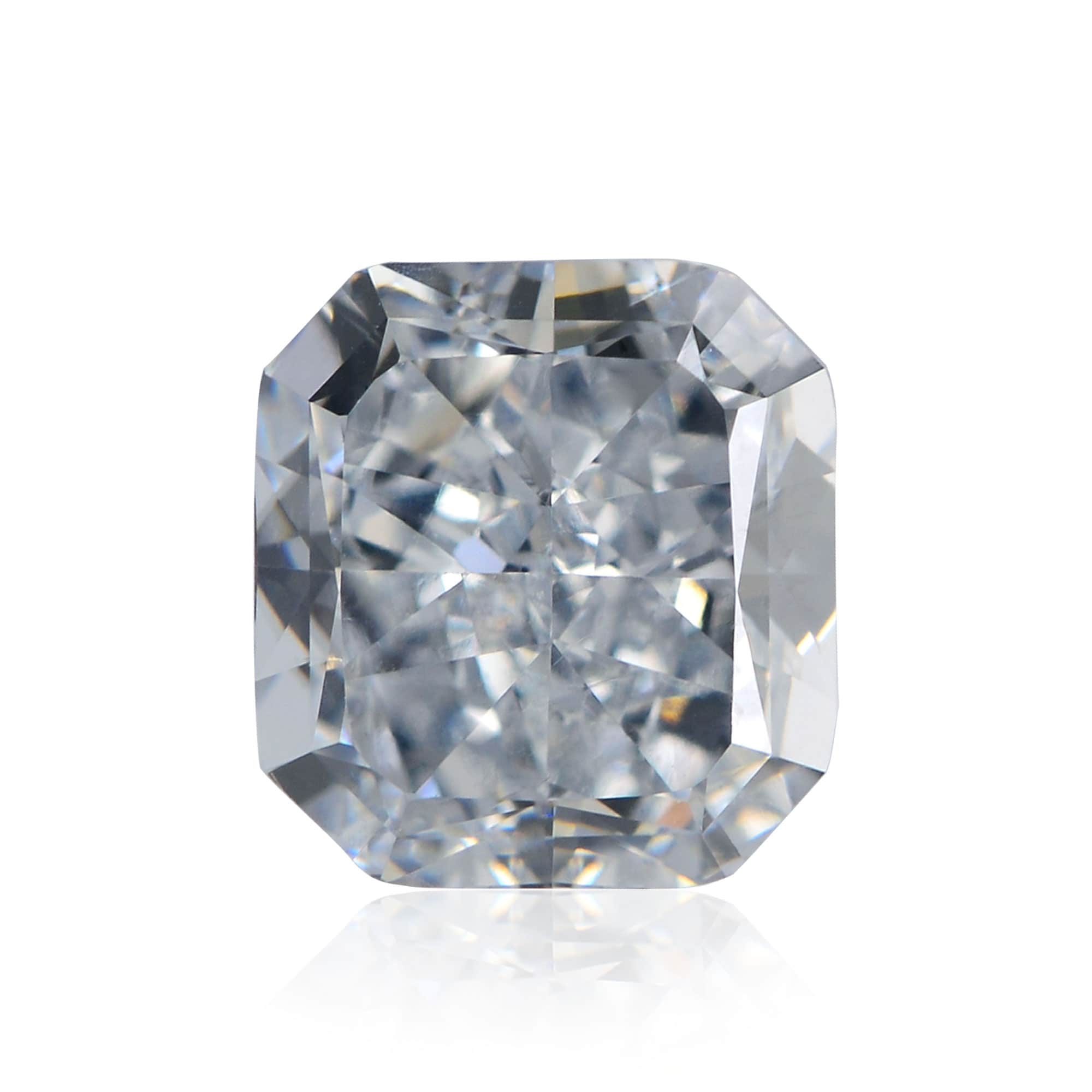
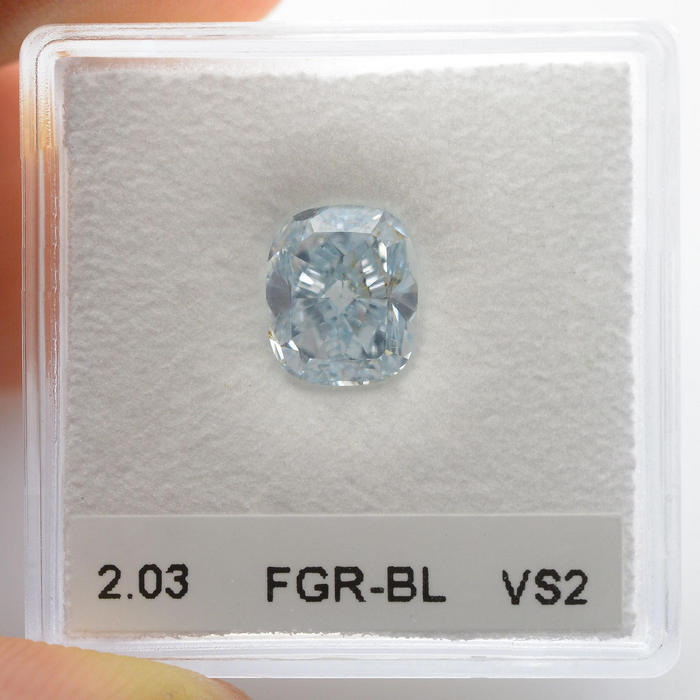
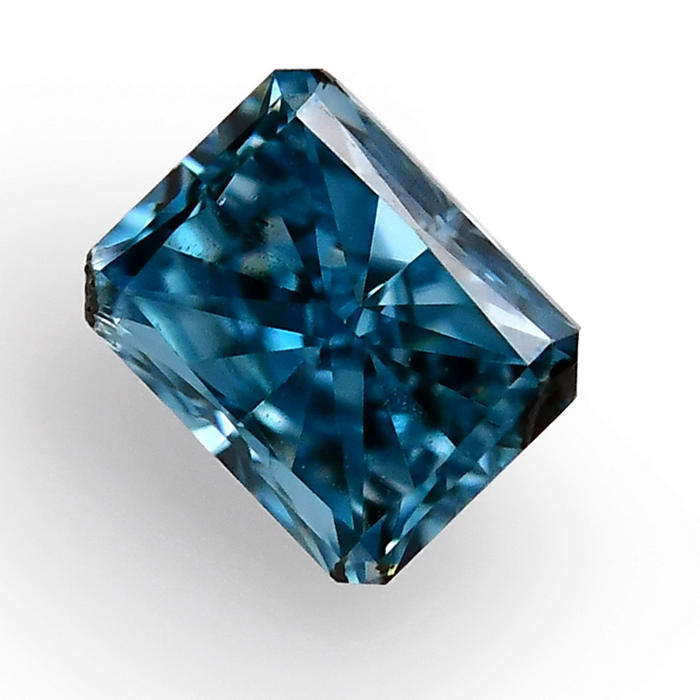
Color Intensity Levels for Blue Diamonds:
The color intensity levels differ from diamond color to diamond color. Blue diamonds can be found in the following color intensity levels, from lower intensity to higher intensity:
- Faint
- Very Light
- Light
- Fancy Light
- Fancy
- Fancy Intense
- Fancy Vivid
- Fancy Deep
- Fancy Dark (if a secondary color is present)
Blue Diamond Shapes
The most important and desirable aspect of a blue diamond is its color. Although the 4Cs are perceived as equal when discussing colorless diamonds (carat, clarity, color, cut,) this is not the case for fancy color diamonds. Therefore, every feature of the diamond will be determined based on how it affects the stone’s color. The shape of the blue diamond is no exception. Like other color diamonds, the radiant and cushion shapes are the most recommended because they enable the diamond to display its color in the best way possible. However, some customers are more interested in a certain shape than they are the color quality. Additionally, some stones are so superb; cutting them into a different shape won’t necessarily take away from their beauty. In such cases, other shapes can be considered including round, pear, and emerald. Less common shapes are marquise and oval, but these can be found too as well as other fancy shapes for diamonds.
Blue Diamonds – A Timely Color For The Year Of The Dragon
The rapid growth of China into an economic powerhouse coupled with expatriate Chinese communities in virtually every corner of the world has resulted in Chinese culture becoming ubiquitous.
Chinese New Year for 2012 was held on January 23 and is represented in the zodiac by the legendary animal, the Dragon. Consequently, according to the Chinese Zodiac, from 23 January, 2012 till 9 February, 2013 is the Year of the Dragon. The Year of the Dragon is considered one of the luckiest years in the Chinese Zodiac; it is one that brings happiness and good fortune.
The Dragon is a mystical creature that has been esteemed since ancient times. It is believed to transfuse vitality, courage and heroism to the beholder and symbolizes power, excellence, divinity, and nobility.
The twelve year cycle of animals in the Chinese Zodiac always associates the animal with one of the five elements – Wood, Fire, Earth, Metal, and Water – by which the animal’s intrinsic nature is tempered.
When it is associated with water, the Yin of the Water is the perfect foil to the most potent symbol of Yang – the revered Dragon. Water, in Taoist thought, represents a flexibility and softness. These characteristics can be used to calm the power and fearless temperament of the Dragon.
To represent this association, the Water Dragon is often depicted either completely in blue or with blue eyes. Blue is a color that is much coveted in China as it symbolizes immortality. Many clients at LEIBISH have referenced the strength, nobility, and good fortune of some blue colored diamonds that hint to eyes of the water dragon.
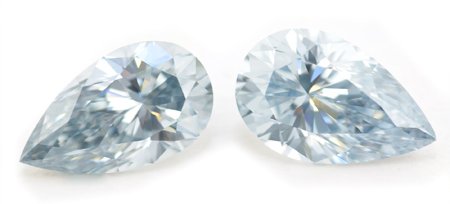
|
Eyes of the Water Dragon |
Just as the Water Dragon is believed to imbue water elements to those it “touches,” a similar thing may be stated about blue diamonds. These very rare and expensive stones display a nobility all their own. They often accompany gray diamonds as a secondary color. Pure, natural blue diamonds are very rare and very expensive; especially larger examples of these stones. Many jewelers have never laid their eyes on a blue diamond.
However, given that this year is the auspicious Year of the (Water) Dragon, this rare treat is undoubtedly a timely purchase; especially when you consider the investment potential of fancy blue diamonds. Fancy blue diamonds have exhibited outstanding price resilience in times of crisis and outperformance in times of economic strength, with prices having exceeded USD1,000,000/carat.
Just like the Water Dragon that appears only once every sixty years, rest assured that the owner of a fancy blue diamond would possess a similar rarity. And given that this year is the auspicious Year of the (Water) Dragon, this rare treat is undoubtedly a timely purchase. Visit the LEIBISH blue diamond collection here.
